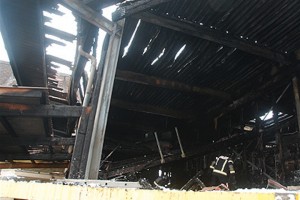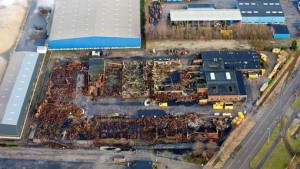Mission
Long-Term Human-Robot Teaming for Robot-Assisted Disaster Response (TRADR) began on November 1, 2013. It is an EU-funded 4-year Integrated Project in the FP7 which builds on the research and experience of the NIFTi project. Using a proven-in-practice user-centric design methodology, TRADR develops technology for human-robot teams to assist in disaster response efforts, over multiple missions: The novel challenge is how to make experience persistent.
 In the TRADR scenario, various kinds of robots collaborate with human team members to explore the environment, and gather physical samples. Throughout this collaborative effort, the team gradually develops its understanding of the disaster area over, multiple possibly asynchronous missions (persistent environment models), to improve team members’ understanding of how to work in the area (persistent multi-robot action models), and to improve team-work (persistent human-robot teaming).
In the TRADR scenario, various kinds of robots collaborate with human team members to explore the environment, and gather physical samples. Throughout this collaborative effort, the team gradually develops its understanding of the disaster area over, multiple possibly asynchronous missions (persistent environment models), to improve team members’ understanding of how to work in the area (persistent multi-robot action models), and to improve team-work (persistent human-robot teaming).
The TRADR use cases involve response to a medium to large scale industrial accident by teams consisting of human rescuers and several robots (both ground and airborne). TRADR missions will ultimately stretch over several days in increasingly dynamic environments.
DFKI is the coordinator of the TRADR consortium, which consists of 12 partners from 6 countries, among which there are 5 universities, 3 research institutes, one industry partner and three end-user organizations, representatives of fire-brigades from Germany, Italy and the Netherlands. Eight of the partners have already collaborated very successfully in the NIFTi project. Further details of the consortium can be found under Partners.
To realise its main concepts, TRADR formulates three scientific objectives:
Objective 1: Persistent environment model
Develop S&T for the gradual construction of models of dynamic environments, fusing multi-modal observations from different kinds of robots, possibly operating asynchronously across multiple sorties during a mission.
Objective 2: Persistent models for multi-robot acting
Develop S&T for the gradual adaptation and grounding of individual- and multi-robot task-level planning and execution within and across sorties, to reflect experience with operating in the disaster area.
Objective 3: Persistent models for human-robot teaming
Develop S&T for the gradual adaptation of an individual robot’s social skills to reflect experience with collaborating within a human robot team.
For further details like roadmap and work packages, please refer here.


